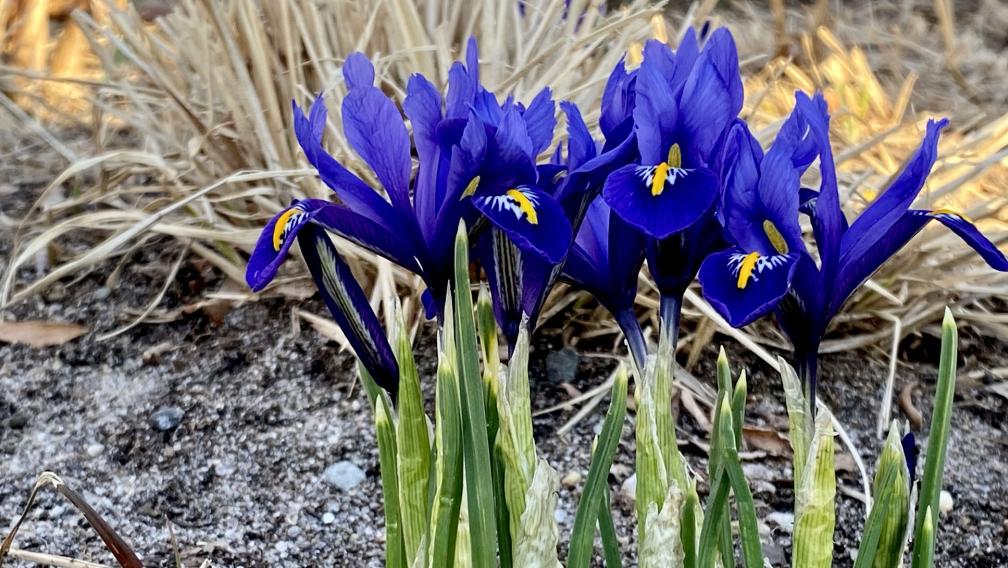When the sabbath was over, Mary Magdalene, and Mary the mother of James, and Salome bought spices, so that they might go and anoint Jesus. And very early on the first day of the week, when the sun had risen, they went to the tomb. They had been saying to one another, ‘Who will roll away the stone for us from the entrance to the tomb?’
Mark 16:1–8
The women go to the tomb early in the morning. They walk together as the crimson hues of sunrise line the sky, Salome with a jar of spices in her hands, the smell wafting around them. They are not silent. How can we accomplish our mission to anoint the body of Jesus, they ask one another, if a stone is in the way?
It is not an ordinary stone. Rather it is megas in Greek — very large — and far too heavy for even the three of them to push together. The stone, in its concreteness, conceals a particular death, the death of the one with whom they have walked and talked, with whom they have seen both miracles and suffering. It is the symbol of the finality of a closed door, the end of a great hope, and the place behind which flesh and bone have breath no more.
The women therefore come with the expectation that they must “do something,” only to find it has already been done. God has not asked the impossible from them. On the contrary, God has made the impossible possible, for in the context of the life of Jesus, from the incarnation to the crucifixion, the stone is also a standing stone — it stands in for death itself, the barrier in the way of eternal and abundant freedom, and of hope restored. It is a stone that requires a supernatural intervention, the in-breaking of spiritual force, and its removal is the signal of a new world initiated.
As theologian N.T. Wright notes, “The resurrection completes the inauguration of God’s kingdom…it is the decisive event demonstrating that God’s kingdom really has been launched on earth as it is in heaven.” Because it is precisely such an earthly event, instigated by the Holy Spirit, it is both revealed to particular women in a particular time — to Mary Magdalene, Mary, the mother of James, and Salome — and yet it is also a removal of death for all of us, for those who have come before and those yet alive.
I will give you a new heart and put a new spirit in you; I will remove from you your heart of stone and give you a heart of flesh.
Ezekiel 36:36
Easter is therefore a time for each of us to reflect on the advent of an ongoing opening, not only in the world at large, but in our own hearts where, as in Ezekiel, we become receptive to receiving the free gift of “a heart of flesh” instead of stone. The barriers we erect that keep us unresponsive to God’s love can be removed, for God has already accomplished it and opened up the way.
Summerlee Staten
Executive Director for Faith Formation & Education
Easter Family Service
Sunday at 9:15am
On Easter Day you are invited to a joyful, warm, welcoming, and engaging 30-minute Episcopal church service designed specifically for children of all ages. The service includes scripture, a short sermon, and music both traditional and new. Together we will express and encounter the deep truths of our faith in language and action accessible to everyone.
Family Service Watch Party
You’re invited to watch together with other families starting at 9:10am on the Children’s Time Zoom link. Stay on after the service for Children’s Time. If you haven’t already, register here.
Children’s Time and Discovery will be on hiatus Easter Sunday, April 4, and return Sunday, April 11.
Spiritual Resources
Stations of the Cross
- The Way of the Cross — For Kids. This can easily be adapted for your family’s environment: around your home or a walk along the East or Hudson river, in Central Park, or even downtown along Broadway, “The Canyon of Heroes,” which might remind us of previous celebrations, a modern-day version of Jesus’ Palm Procession into Jerusalem.
- Stations of the Cross from Latin America 1492–1992. In the paintings of Adolfo Pérez Esquivel of Argentina (Nobel Peace Prize Laureate, 1980) and liturgical meditations by Maria Graf-Huber, we walk with Jesus through Latin America’s five-hundred-year struggle for liberation.
Other Holy Week Resources
- Holy Week in a Box meditations for families with children.
- Holy Week Family Worship: Outline for Maundy Thursday & Good Friday. Use or adapt these services at the dinner table or create some sacred space, however is best for your family.
- The Great Easter Vigil Fort. Make a pillow fort, or a “cave,” under a table. Turn down the lights and grab a flashlight. Get cozy. Read and sing through the prayers and readings suggested by Wendy Barrie — however much is appropriate for your children. You could do some before bed and the last part on Easter morning.
- Holy Week coloring pages by Sybil Macbeth. You can “incorporate them with your intercessory prayers or with your current Lenten discipline. Another idea is to place your griefs, sorrows, questions, queries, beliefs, unbeliefs, petitions, wails, wows, gratitudes, grudges, pains, pleasures, satisfactions, sufferings — anything that comes up for you — on the templates. Use words, doodles, strokes of the pen, dots, dashes, color…”
